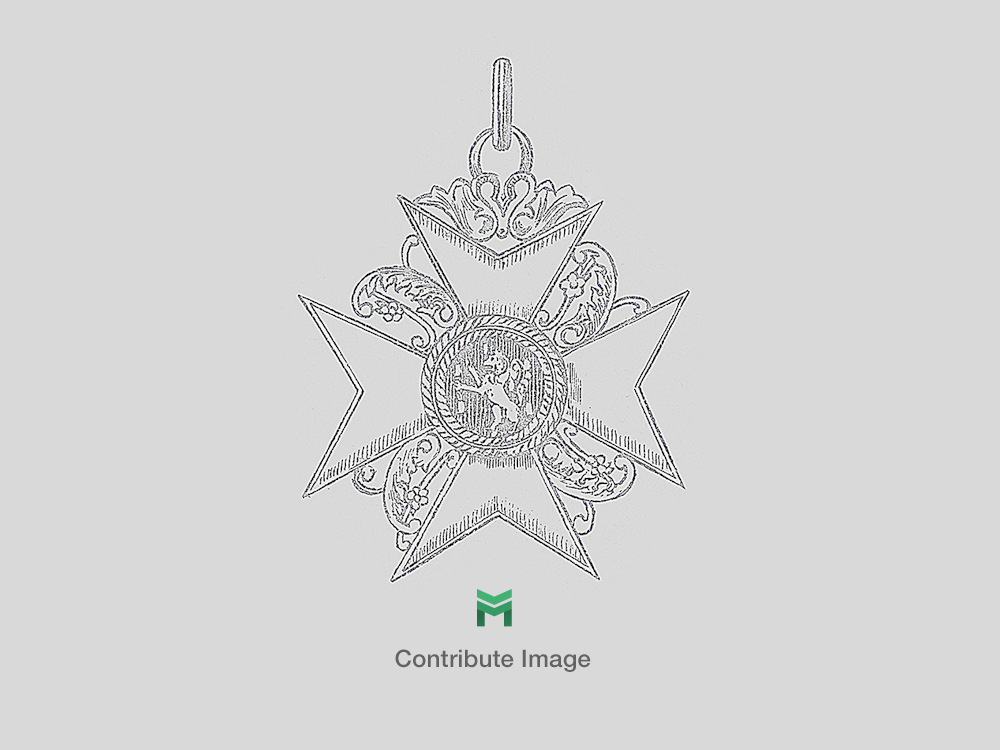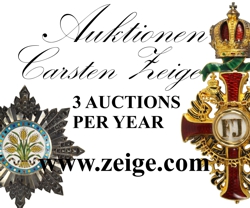Order of St. Stephen, Type III, Commander
SKU: 01.AUT.0103.303.01
Estimated market value:

Estimated market value:
Attributes
History
This Order was established by Empress Maria Theresa of Austria to honour Hungarian nobility who had rendered substantial civil service.
Following years of war, Austria eventually entered a period of peace. Due to the creation of the Military Order of Maria Theresa specifically awarded to military officers, it was decided a civilian equivalent was necessary. Stephen I of the Arpad Dynasty the first King of Hungary (1000-1038), and therefore was also a patron saint. The Order was named after him for both political and religious reasons. In 1760, the idea of the Order was supported by Count France Esterhazy de Galantha and was legally approved by Maria Theresa in 1764. The official date of foundation was May 5, 1764, in line with the coronation ceremonies of Archduke Joseph being crowned King of the Romans.
The Order was awarded for extraordinary civil services to the ruling house and to the state (however, high ranking military officials were often awarded this Order). The Grand Master position was to be held by each successive Hungarian Monarch, the first being Maria Theresa, followed by Emperor Joseph II. It was awarded in three classes with a fixed number of companions: the Grand Cross (20), the Commander’s Cross (30) and the Knight’s Cross (50). A chain was presented to members of the Habsburgs lands, and depending on the other class of decoration, special ‘robes’ were awarded.
In 1908, a new field uniform was introduced which resulted in a new ruling regarding how the Grand Cross was worn. When an individual was in the field, on manoeuvres, for indoor duty and off duty, they would wear the Knight’s Cross with a reduced size (20mm) Grand Cross Star attached to a triangular ribbon. In 1918, this concept was applied to the Commander class as well. Although this order was specifically created for civilians, on March 18 1918, a “Grand Cross with war decoration and swords” was awarded to Archduke Joseph. This award is not documented elsewhere, so it is difficult to say whether this was a lavish act of the Archduke or Emperor Karl I, who awarded it. The Order of St. Stephen ceased to be awarded by the end of 1918.
In 1938, the Order of St. Stephen was revived by Regent Admiral Nikolaus Horthy de Nagybanya in the Kingdom of Hungary. It was awarded a few times and finally dissolved in 1944. However, in 2011 it was refounded and endowed in Hungary. It was awarded in 2013.
Recipients were required to return their decorations after death, however they could have privately made crosses manufactured. The main differences between the types is based on the style and construction of the crown and the quality of the medallion. Type I is early and is identified by the crown only having an obverse face. It is attached to the ribbon with a slide. This type lasted until the early 19th century, and the time period is therefore considered 1757 until around 1840. The Type II crown is attached to cross but is hollow. The reverse bears a single loop to feed the ribbon through. This time period is considered to be roughly 1840-1880. The Type III crown is embossed on both the obverse and the reverse, creating a three-dimensional crown. A ring, or eyelet was added to the orb on the top of the crown to allow a ribbon to be attached. These types are more widely seen, and are often considered to be from 1880-1918. In the early models, the order’s device was in black enamel on the obverse with the initials on the reverse. After 1860, the inscription was embossed in Gold. Moreover, the transition to metal stars was officially made in 1847.
The Commander’s Cross is worn on a neck ribbon. In 1918 a kleindekoration was added to the commander’s cross. Throughout the life span of this Order, a total of 268 decorations of this class were awarded. Only one Commander’s Cross was decorated with diamonds.
See the Order of St. Stephen of Hungary, in the Orders of the Hungarian Regency (1918-1944), and the Hungarian Order of St. Stephen, in the Orders of Hungary (1989) for more information.

Versions
$20,000 USD
Gold/Enamelled
Obv: PUBLICUM MERITORUM PRAEMIUM M T Rev: STO. ST. RI. AP.
Official issue cross was always in Gold and enamels. Private purchase pieces, for everyday wear, were available to recipients in silver/g...


Comments
Sign in to comment and reply.


Scroll Top